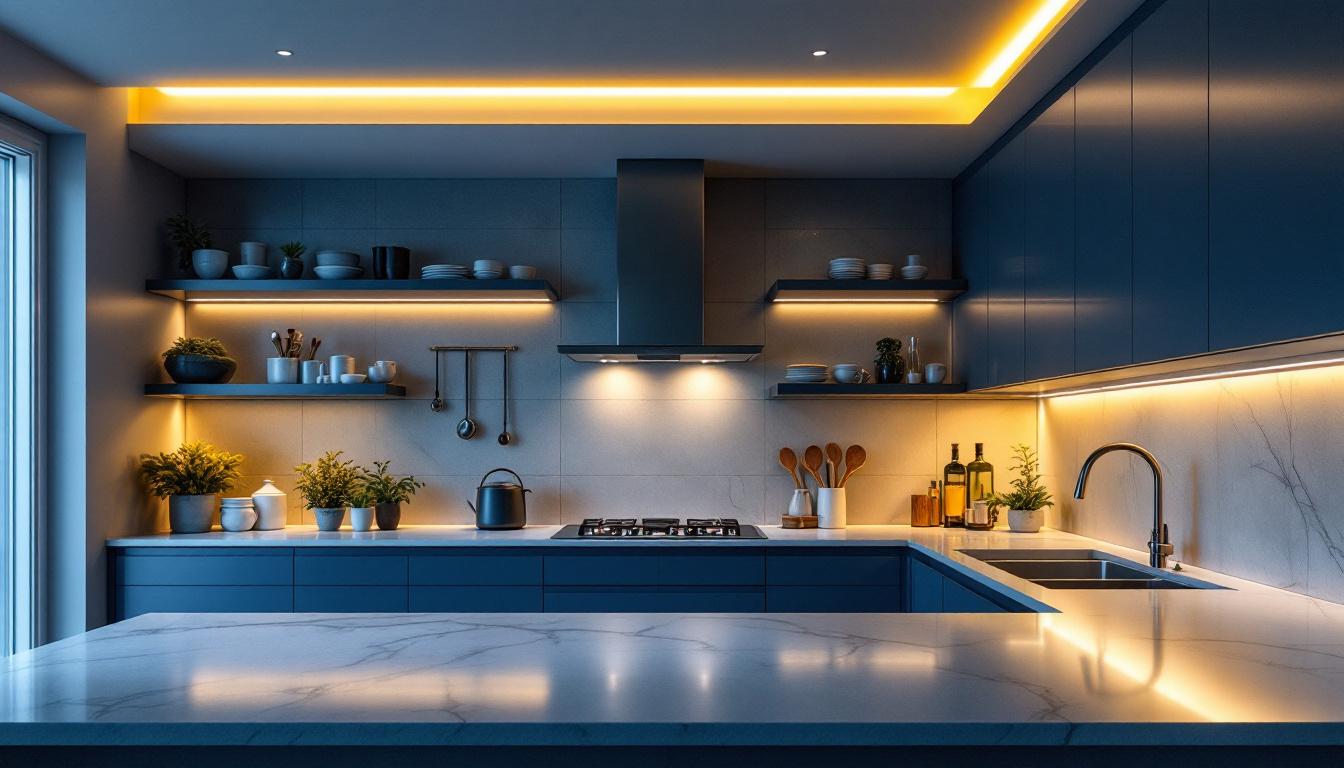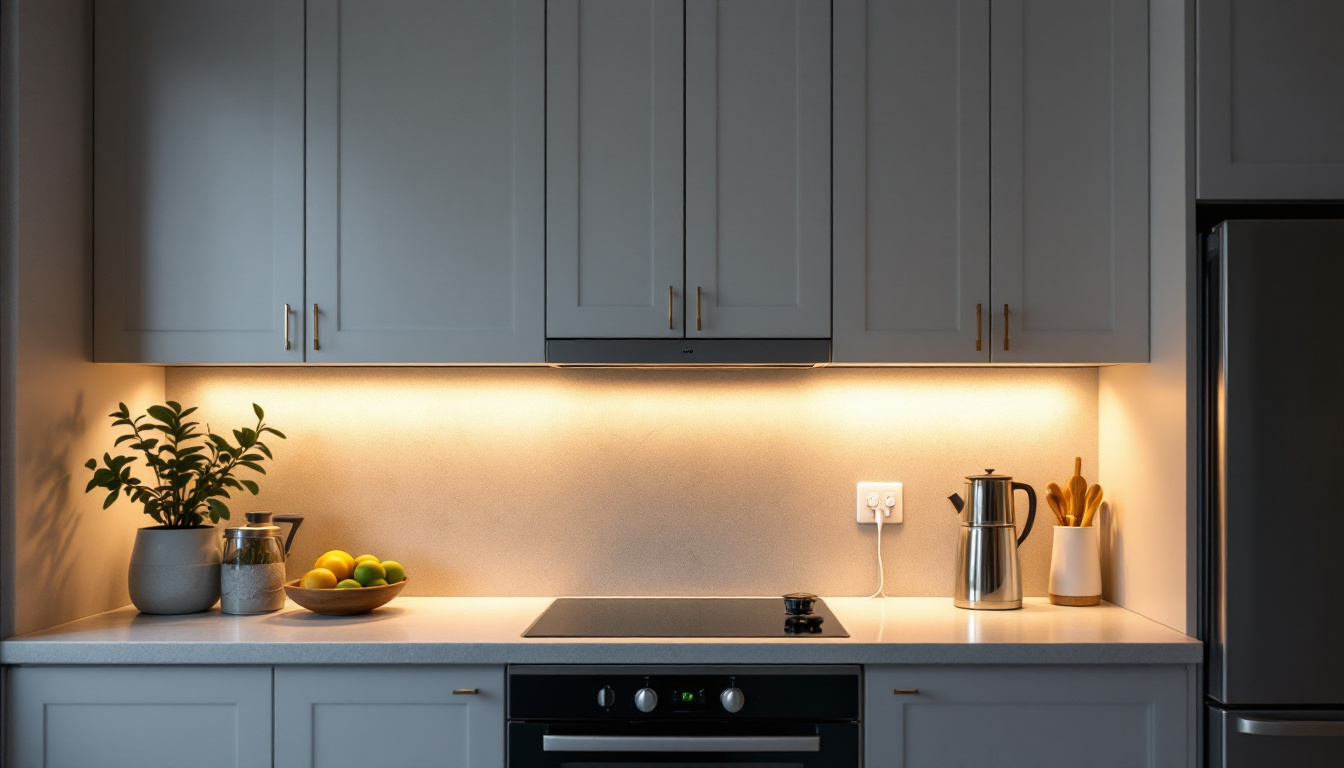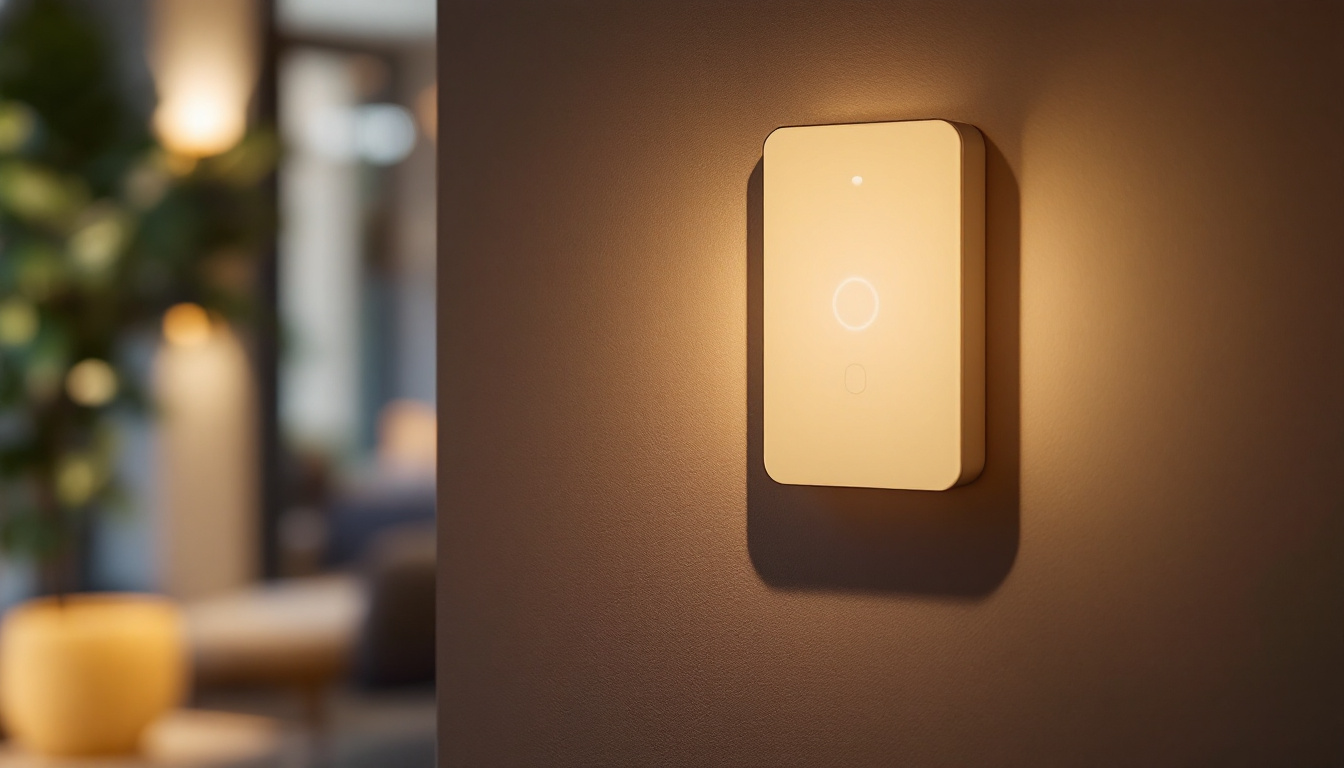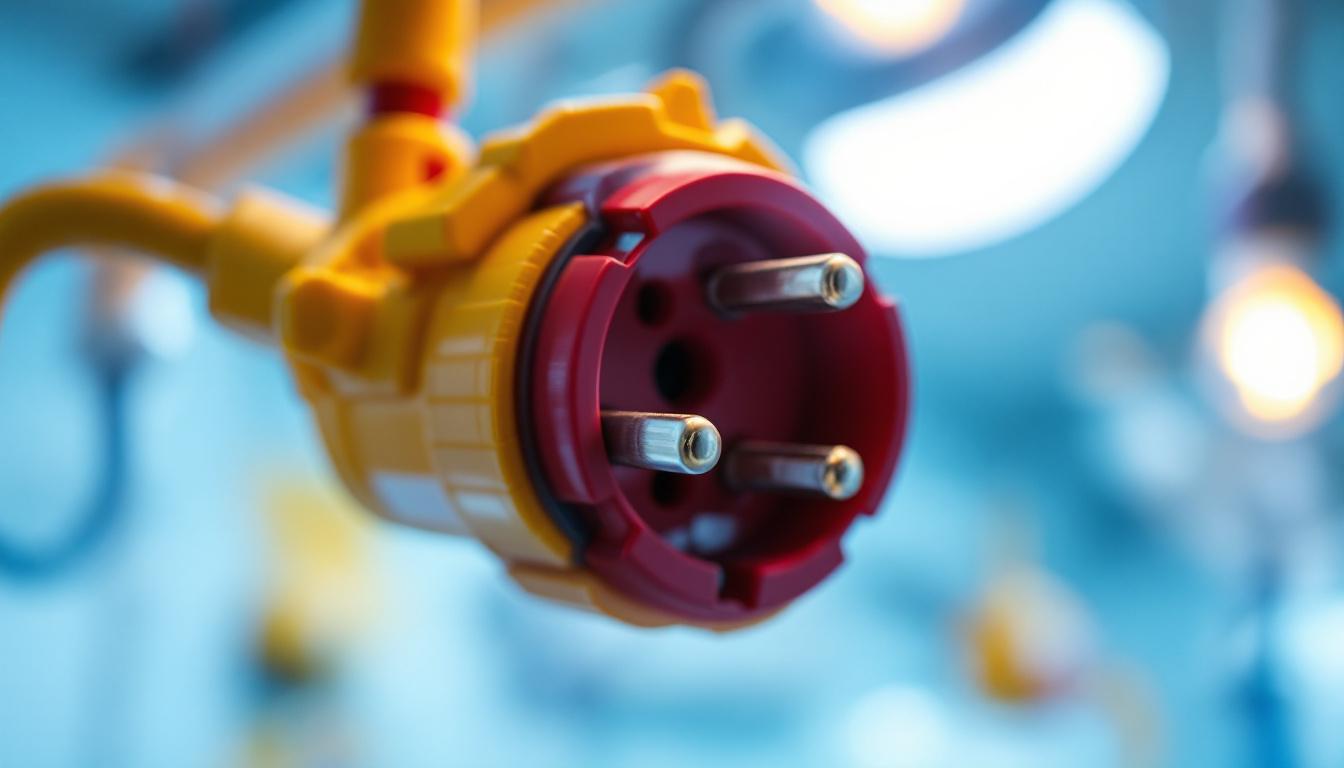
The kitchen is often considered the heart of the home, a space where family and friends gather to share meals and create memories. As such, the importance of effective lighting in this area cannot be overstated. Recessed lighting has emerged as a popular choice for kitchen illumination, offering both aesthetic appeal and functional benefits. This article explores the growing significance of recessed lighting in kitchens and its impact on the lighting industry.
Over the years, kitchen lighting has transformed significantly. Traditional overhead fixtures and pendant lights have given way to more versatile and efficient options. Recessed lighting, in particular, has gained traction due to its sleek design and ability to provide even illumination throughout the space.
Initially, recessed lighting was primarily used in commercial settings, but its adaptability and modern look have made it a staple in residential kitchens. As homeowners seek to create open and inviting spaces, recessed lighting has become an essential component of kitchen design. The shift towards open floor plans has further fueled this trend, as recessed lighting can seamlessly blend with the overall aesthetic of a home, creating a cohesive look that enhances the flow between the kitchen and adjoining living areas.
One of the primary advantages of recessed lighting is its ability to provide a clean and unobtrusive look. Unlike traditional fixtures that can dominate the visual space, recessed lights are installed into the ceiling, creating a seamless appearance. This is particularly beneficial in kitchens where aesthetics play a crucial role in overall design. The unobtrusive nature of recessed lights allows for a more spacious feel, making even smaller kitchens appear larger and more open.
Additionally, recessed lighting offers flexibility in terms of placement and functionality. By strategically positioning fixtures, lighting contractors can create zones within the kitchen, enhancing both task lighting and ambient illumination. This versatility allows for a more personalized approach to kitchen lighting, catering to the specific needs of the homeowner. For instance, installing adjustable recessed lights above countertops can provide focused task lighting for meal preparation, while softer ambient lighting can create a warm atmosphere for family gatherings or entertaining guests.
As the world increasingly focuses on sustainability, energy efficiency has become a top priority in the lighting industry. Recessed lighting fixtures are often designed to accommodate LED bulbs, which consume significantly less energy than traditional incandescent options. This shift not only reduces electricity bills but also contributes to a lower carbon footprint. Furthermore, many recessed lighting fixtures now come with smart technology options, allowing homeowners to control their lighting remotely or set schedules, further optimizing energy use.
Moreover, the longevity of LED bulbs means that homeowners will spend less time and money on replacements, further enhancing the appeal of recessed lighting. As lighting contractors, understanding these benefits can help in promoting energy-efficient solutions to clients, aligning with the growing demand for sustainable home improvements. Additionally, the use of dimmable recessed lights can enhance energy savings even further, allowing homeowners to adjust brightness levels according to their needs, whether they are cooking, dining, or relaxing in their kitchen space. This adaptability not only supports energy conservation but also contributes to a more dynamic and enjoyable kitchen environment.
When incorporating recessed lighting into a kitchen, several design considerations must be taken into account. From fixture placement to color temperature, each element plays a vital role in achieving the desired ambiance and functionality.
Proper placement of recessed fixtures is crucial for effective lighting. A common guideline is to space fixtures approximately 4 to 6 feet apart, depending on the ceiling height and the desired brightness. For kitchens with higher ceilings, more fixtures may be necessary to ensure adequate illumination.
Additionally, focusing on key areas such as countertops, islands, and workspaces can enhance task lighting. By strategically positioning fixtures above these areas, lighting contractors can create a well-lit environment that promotes safety and efficiency. It is also important to consider the layout of the kitchen; for instance, an L-shaped or U-shaped kitchen may require a different approach to fixture placement compared to an open-concept design. In open spaces, aligning recessed lights with the flow of the room can help maintain a cohesive look while providing ample light for all activities.
The color temperature of recessed lighting can significantly impact the overall mood of the kitchen. Warmer tones (2700K to 3000K) create a cozy and inviting atmosphere, while cooler tones (3500K to 4100K) offer a more modern and energetic feel. Understanding the homeowner’s preferences and the kitchen’s design theme is essential in selecting the appropriate color temperature.
Furthermore, the use of dimmer switches can provide added flexibility, allowing homeowners to adjust the lighting according to the time of day or the occasion. This adaptability enhances the overall functionality of the kitchen space. In addition to dimmers, incorporating smart lighting systems can further elevate the experience, enabling users to control brightness and color temperature via smartphone apps or voice commands. This technology not only adds convenience but also allows for personalized lighting scenes that can transform the kitchen from a bustling cooking area to a serene dining space with just a few taps or commands.
The lighting industry is constantly evolving, and recessed lighting is no exception. Several trends have emerged that reflect changing consumer preferences and advancements in technology.
As smart home technology continues to gain popularity, many homeowners are looking for lighting solutions that can be integrated into their smart systems. Recessed lighting fixtures equipped with smart technology allow for remote control, scheduling, and even voice activation. This level of convenience appeals to tech-savvy consumers who seek to enhance their home automation experience.
Lighting contractors can benefit from staying informed about these smart lighting options, as they present an opportunity to offer clients innovative solutions that align with modern lifestyle demands.
Another trend in recessed lighting is its integration into architectural features. Homeowners are increasingly seeking ways to highlight unique design elements, such as crown molding or architectural niches, using recessed fixtures. This approach not only enhances the visual appeal of the kitchen but also creates a sense of depth and dimension.
Lighting contractors should consider collaborating with designers and architects to develop customized recessed lighting solutions that complement the overall design of the kitchen. This collaboration can lead to more creative and visually stunning results.
While recessed lighting offers numerous benefits, it is not without its challenges. Lighting contractors must navigate various obstacles during installation to ensure optimal performance and aesthetics.
One of the primary challenges in installing recessed lighting is the ceiling structure. Depending on the type of ceiling—whether it be drywall, plaster, or a drop ceiling—different installation techniques may be required. Additionally, insulation can pose a challenge, as recessed fixtures must be properly rated for contact with insulation to prevent overheating.
Contractors must be knowledgeable about local building codes and regulations regarding recessed lighting installation, ensuring that all work is compliant and safe. This expertise not only protects the contractor but also builds trust with clients.
Electrical considerations are another critical aspect of recessed lighting installation. Ensuring that the electrical system can support the added load of recessed fixtures is essential for safety and functionality. This may involve upgrading circuits or adding additional wiring, which can complicate the installation process.
Lighting contractors should conduct thorough assessments of the existing electrical system before proceeding with installation. This proactive approach can help avoid potential issues down the line and ensure a seamless installation experience for the homeowner.
As the lighting industry continues to evolve, recessed lighting is poised to play an increasingly important role in kitchen design. Innovations in technology, design, and energy efficiency are shaping the future of this lighting solution.
The ongoing advancements in LED technology promise to enhance the performance of recessed lighting. New developments may lead to even greater energy efficiency, improved color rendering, and longer lifespans for bulbs. As these technologies become available, lighting contractors will have the opportunity to offer clients the latest and most efficient solutions.
Furthermore, the potential for tunable white LEDs—allowing users to adjust the color temperature throughout the day—could revolutionize the way recessed lighting is utilized in kitchens, providing a dynamic and adaptable lighting experience.
The demand for personalized home environments is on the rise, and recessed lighting is no exception. Homeowners are increasingly looking for customized solutions that reflect their unique tastes and lifestyles. This trend opens the door for lighting contractors to offer tailored designs that incorporate recessed lighting into the overall aesthetic of the kitchen.
By collaborating with homeowners to understand their vision and preferences, lighting contractors can create bespoke lighting solutions that enhance both functionality and style, ultimately leading to greater customer satisfaction.
Recessed lighting has become a vital component of kitchen design, offering a blend of aesthetic appeal and functional benefits. As the lighting industry continues to evolve, understanding the importance of recessed lighting will be essential for lighting contractors looking to meet the demands of modern homeowners.
From energy efficiency to smart technology, the trends shaping recessed lighting present both challenges and opportunities for contractors. By staying informed and adapting to these changes, lighting professionals can position themselves as leaders in the industry, providing innovative solutions that enhance the heart of the home—the kitchen.
Ready to elevate your kitchen designs with the latest in recessed lighting? At LumenWholesale, we provide lighting contractors with the highest quality, spec-grade lighting products at prices that can’t be beaten. Say goodbye to local distributor markups and hello to a vast selection of reliable, high-performance lighting that meets the most stringent industry standards. With free shipping on bulk orders, LumenWholesale is your go-to source for premium lighting solutions at the best value. Enhance your next project with the perfect blend of quality, affordability, and convenience. Wholesale Lighting at the Best Value is just a click away.

Discover innovative strategies from expert lighting contractors on installing under cabinet plug-in lighting.

Discover innovative strategies employed by smart lighting contractors to enhance energy efficiency and convenience with movement-sensitive light switches.

Explore the transformative impact of Lviton products through real-world success stories from lighting contractors.

Discover why red plugs in hospitals are critical for safety and reliable lighting installations.